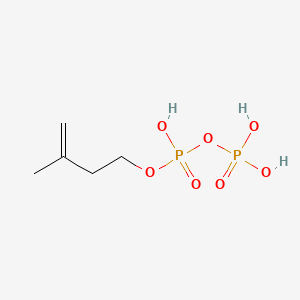| MartÃn JF et al. |
Conversion of beta-carotene into astaxanthin: Two separate enzymes or a bifunctional hydroxylase-ketolase protein? |
2008 |
Microb. Cell Fact. |
pmid:18289382
|
| Chemler JA et al. |
Biosynthesis of isoprenoids, polyunsaturated fatty acids and flavonoids in Saccharomyces cerevisiae. |
2006 |
Microb. Cell Fact. |
pmid:16719921
|
| Lemuth K et al. |
Engineering of a plasmid-free Escherichia coli strain for improved in vivo biosynthesis of astaxanthin. |
2011 |
Microb. Cell Fact. |
pmid:21521516
|
| Dellomonaco C et al. |
The path to next generation biofuels: successes and challenges in the era of synthetic biology. |
2010 |
Microb. Cell Fact. |
pmid:20089184
|
| Schoel B and Kaufmann SH |
Influence of mycobacterial virulence and culture condition on gamma delta T cell activation. |
1998 |
Microb. Pathog. |
pmid:9514640
|
| Morita CT et al. |
Recognition of nonpeptide prenyl pyrophosphate antigens by human gammadelta T cells. |
1999 |
Microbes Infect. |
pmid:10801228
|
| Takaichi S et al. |
Carotenoids of Gemmatimonas aurantiaca (Gemmatimonadetes): identification of a novel carotenoid, deoxyoscillol 2-rhamnoside, and proposed biosynthetic pathway of oscillol 2,2'-dirhamnoside. |
2010 |
Microbiology (Reading, Engl.) |
pmid:19959572
|
| Majumdar A et al. |
Probing phosphorylation by non-mammalian isoprenoid biosynthetic enzymes using (1)H-(31)P-(31)P correlation NMR spectroscopy. |
2009 |
Mol Biosyst |
pmid:19668858
|
| Sasaki H et al. |
Copy number loss of (src homology 2 domain containing)-transforming protein 2 (SHC2) gene: discordant loss in monozygotic twins and frequent loss in patients with multiple system atrophy. |
2011 |
Mol Brain |
pmid:21658278
|
| Khan WA et al. |
Context-based FISH localization of genomic rearrangements within chromosome 15q11.2q13 duplicons. |
2011 |
Mol Cytogenet |
pmid:21824424
|
| Nisar N et al. |
Carotenoid metabolism in plants. |
2015 |
Mol Plant |
pmid:25578273
|
| Caballero MC et al. |
Characterization of acyl carrier protein and LytB in Babesia bovis apicoplast. |
2012 |
Mol. Biochem. Parasitol. |
pmid:22057350
|
| Thabet I et al. |
Characterization and subcellular localization of geranylgeranyl diphosphate synthase from Catharanthus roseus. |
2012 |
Mol. Biol. Rep. |
pmid:21706164
|
| Ebert R et al. |
Probenecid as a sensitizer of bisphosphonate-mediated effects in breast cancer cells. |
2014 |
Mol. Cancer |
pmid:25496233
|
| Kaneko Y et al. |
Stage-specific regulation of juvenile hormone biosynthesis by ecdysteroid in Bombyx mori. |
2011 |
Mol. Cell. Endocrinol. |
pmid:21256183
|
| Dairi T et al. |
Cloning of the gene encoding 3-hydroxy-3-methylglutaryl coenzyme A reductase from terpenoid antibiotic-producing Streptomyces strains. |
2000 |
Mol. Gen. Genet. |
pmid:10660057
|
| Saikia S and Scott B |
Functional analysis and subcellular localization of two geranylgeranyl diphosphate synthases from Penicillium paxilli. |
2009 |
Mol. Genet. Genomics |
pmid:19529962
|
| Hogenboom S et al. |
Cholesterol biosynthesis is not defective in peroxisome biogenesis defective fibroblasts. |
2003 |
Mol. Genet. Metab. |
pmid:14680974
|
| Huang L and Pardee AB |
Suberoylanilide hydroxamic acid as a potential therapeutic agent for human breast cancer treatment. |
2000 |
Mol. Med. |
pmid:11126200
|
| Wang P and Malkovsky M |
Different roles of the CD2 and LFA-1 T-cell co-receptors for regulating cytotoxic, proliferative, and cytokine responses of human V gamma 9/V delta 2 T cells. |
2000 |
Mol. Med. |
pmid:10965495
|
